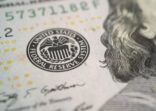In the most recent investor survey from Bank of America Merrill Lynch, 75% of those polled see a soft landing or no landing as the most plausible outcome for the US economy. This is a 10% increase on the previous month and reflects better data on growth and inflation. However, there are contrarian voices suggesting that the consensus is too optimistic, and a harder landing is a more plausible scenario than equity markets believe, writes our sister publication, Portfolio Adviser.
Those who fear a tougher landing point out that ‘soft’ landings are almost impossible to achieve, and central banks have rarely pulled off the trick. The key concern is the lingering impact of rate rises, which many believe has yet to be felt in the real economy, and the impact of central banks’ withdrawal of liquidity.
Peter van der Welle, multi asset strategist at Robeco, says: “It is possible to have benign inflation without tanking the economy, but it is a rarity. If you look at the impact that real rates are already having on the manufacturing sector, we are likely to see further confirmation of spill-over into the services sector. We see cooling there.
“Looking at the spending power of the consumer, if you’re in the soft landing camp, you can say that there could be real income growth – there’s something to be said for that – but if you look at the level of excess savings, they are mainly concentrated in the high income cohort. The US consumer is near exhaustion. If you look at the employment situation, cracks are appearing, and also in other surveys, such as the quit rate. They tell you that you are in the late stage of a classic business cycle, which does usher in – at the least – a mild recession.” He puts only a 30% probability of a soft or no landing scenario.
Mike Riddell, head of the fixed income macro unconstrained team at Allianz Global Investors, is even more gloomy. He says that a range of measures, including credit spreads, implied volatility in FX or equity markets, or just the level of the S&P 500, imply lower than average risk premia, and higher than average economic growth: “Everyone is assuming there will not be a recession – and almost no-one is expecting a hard landing, or worse.”
He has held the view that there will be a worse outcome for a while, but admits that it hasn’t worked to date. He attributes the relative strength of global economies, particularly the US, to the boost from global commodity price falls. He points out that European gas prices are 75-80% lower than they were in August last year. “We underestimated how much of an economic tailwind this would be.” China reopening also helped out global growth, even if its impact was less than had been hoped.
The impact of these factors is fading. Money supply has gone into reverse. The US consumer, which has been an important engine of growth, is also likely to fade. “Consumption moves with real disposable income. But now we see a divergence between disposable income, which has moved lower, and consumption. This is not sustainable in any way,” Riddell says. The impact of fiscal stimulus is also likely to ebb – with interest costs where they are, US policymakers can’t afford to take on more debt.
“We are very negative on global growth. We believe it will move sharply lower over the next nine months. The main driver of this is monetary policy. The reason growth has not weakened yet is not because economies are immune to rate hikes, but because of the lag effect.” He says it generally takes 18 months for interest rates to have any impact on the global economy.
The Bank of England started tightening in December 2021 and the group’s estimates show that UK companies have only felt around one-quarter of that rise. Corporate debt is high, he says, and will need to be refinanced. “This weaker scenario is not priced in, though we don’t know how hard a landing it will be, whether it will be a crash landing or something more measured.”
The gap between GDI and GDP (gross domestic income versus gross domestic product) is also causing concern. In contrast to the giddy numbers reported for GDP, GDI rose at an annual rate of just 1.5% over July to September. It is a similar picture for the past four quarters, with US GDP increasing 3% while GDI has fallen 0.16%. BlackRock’s Investment Institute points out that where this has happened historically, GDP has tended to move towards GDI rather than vice versa. It says: “Fed research suggests GDI is better at flagging when the economy is about to take a turn (for the better or the worse) – which could speak in favour of putting even more weight on it.”
If a harder landing scenario plays out, its impact would depend on the magnitude, and the response of central banks. The bond market, for its part, is already pricing in rate cuts (as early as March 2024 for the ECB), so may not require the same adjustment as the equity market. The equity market, on the other hand, appears to be hoping for rate cuts and a good economic outcome, plus low inflation. This is a ‘Goldilocks’ option.
There are solid arguments supporting a harder landing scenario. They at least suggest that investors should not be putting all their chips on red or black for the year ahead and the sunny optimism displayed by an increasing range of investors may have gone too far. The outcomes are uncertain and the potential for a hard landing appears underestimated by markets.
This story first appeared on our sister publication, Portfolio Adviser.

















